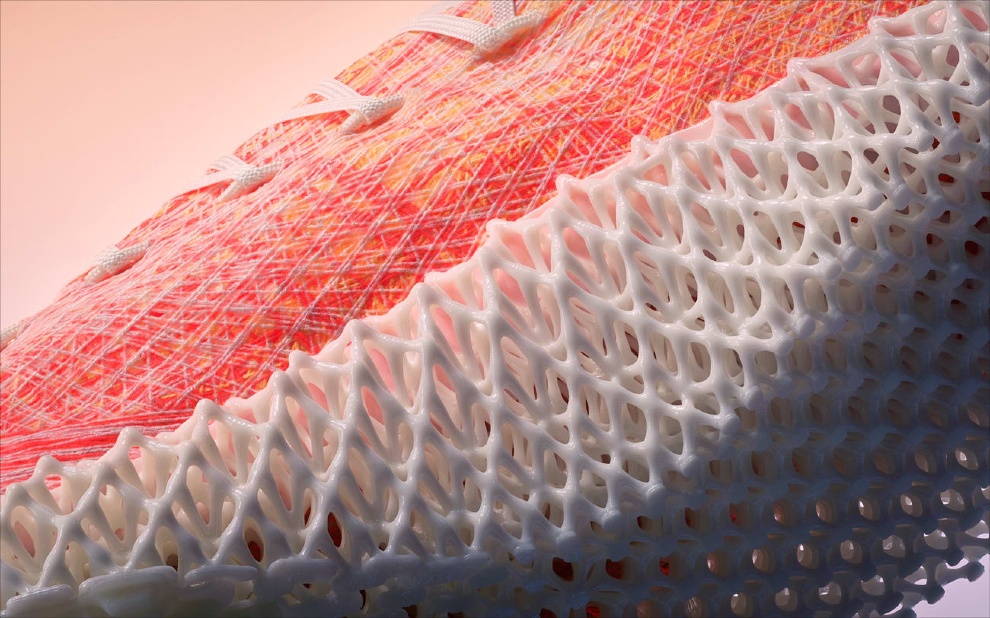Carbon’s M-series printer is used to print the lattice-design midsole, which features multiple performance zones that can be tuned to meet varying cushioning needs. Carbon
A proof-of-concept running shoe from Adidas features an industry-first textile upper and a 3D-printed, lattice-style midsole with tunable cushioning properties.
According to Adidas, the Futurecraft.Strung “allows us to input athlete data in the precision placement of each thread in any direction we choose.”
Special software lets engineers build and test different structures before sending the chosen design to the Strung robot, which weaves each composite thread into a specific performance zone. “The result is a lightweight upper that’s precisely fitted for support, flex, and breathability—all within one piece of material,” according to Adidas.
Precision fit and support lock the heel to help prevent heel slip, which is achieved by employing stronger threads in the heel, midfoot, and toe box. The forefoot is made from softer threads that promote flexibility.
The midsole is “our most radical … lattice design to date, featuring a new shape that caters to forefoot strikers,” said Adidas, which plans to launch Strung in early 2022. The heel has been minimized to remove weight, and the rubber outsole is specifically shaped to [enhance] grip.”
Adidas has worked for several years with 3D printer, software, and materials manufacturer Carbon on lattice-midsole geometries. Leveraging Carbon’s Digital Light Synthesis printer technology and materials expertise, the 3D printing company developed an elastic material specifically for Adidas.
A white paper about developing the midsoles that’s available on the Carbon website says traditional manufacturing methods cannot deliver complex, high-performance, monolithic shoe designs and typically require assembly of multiple parts to create varying performance zones within a single midsole.
This assembly approach leads to added cost, complexity, and quality concerns, says Carbon, adding that it developed a digitized process for creating athletic footwear that eliminates the need for traditional prototyping or molding. “Our technology also allowed Adidas to create a monolithic midsole that addresses precise needs related to movement, cushioning, stability, and comfort,” says the white paper.
